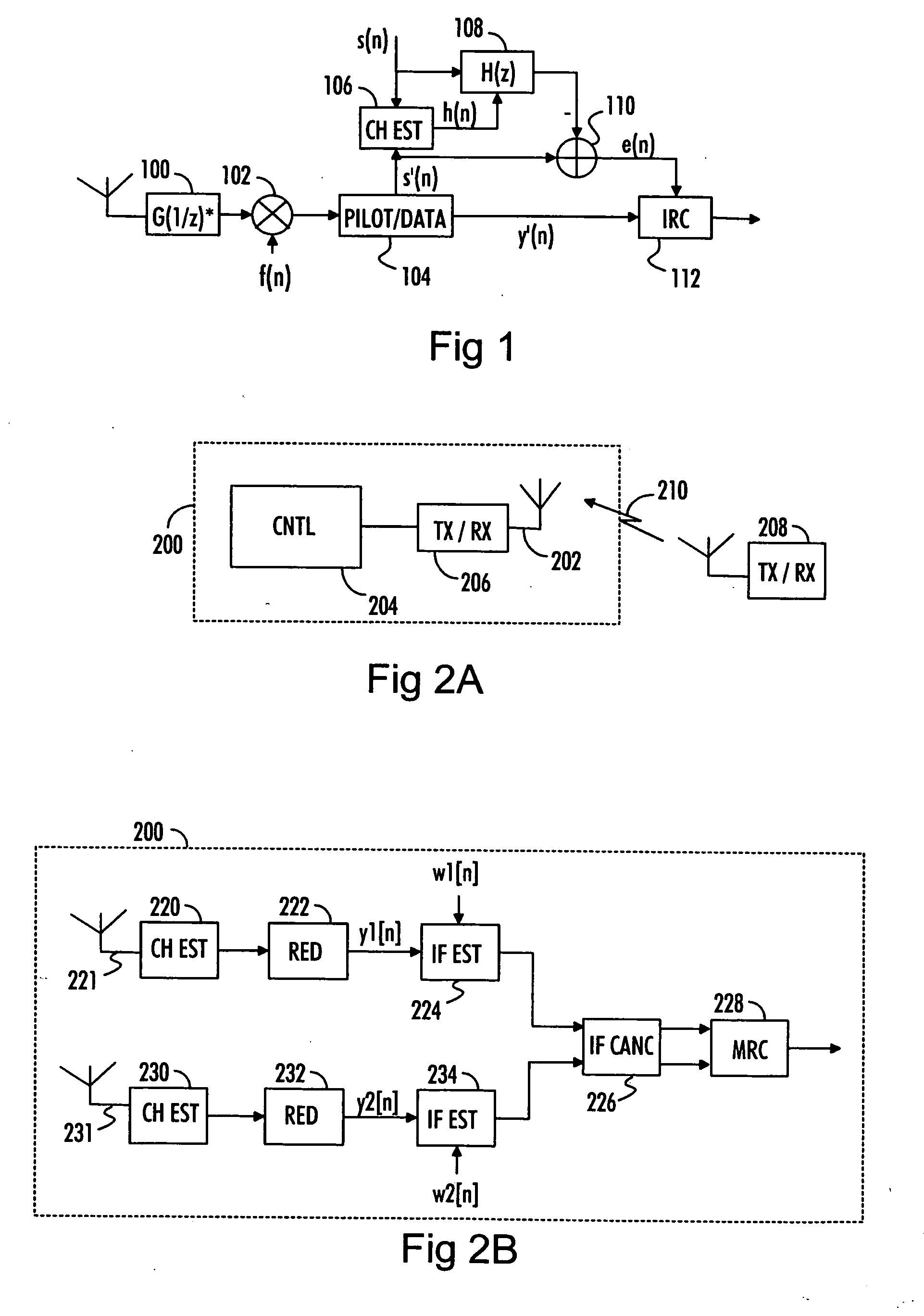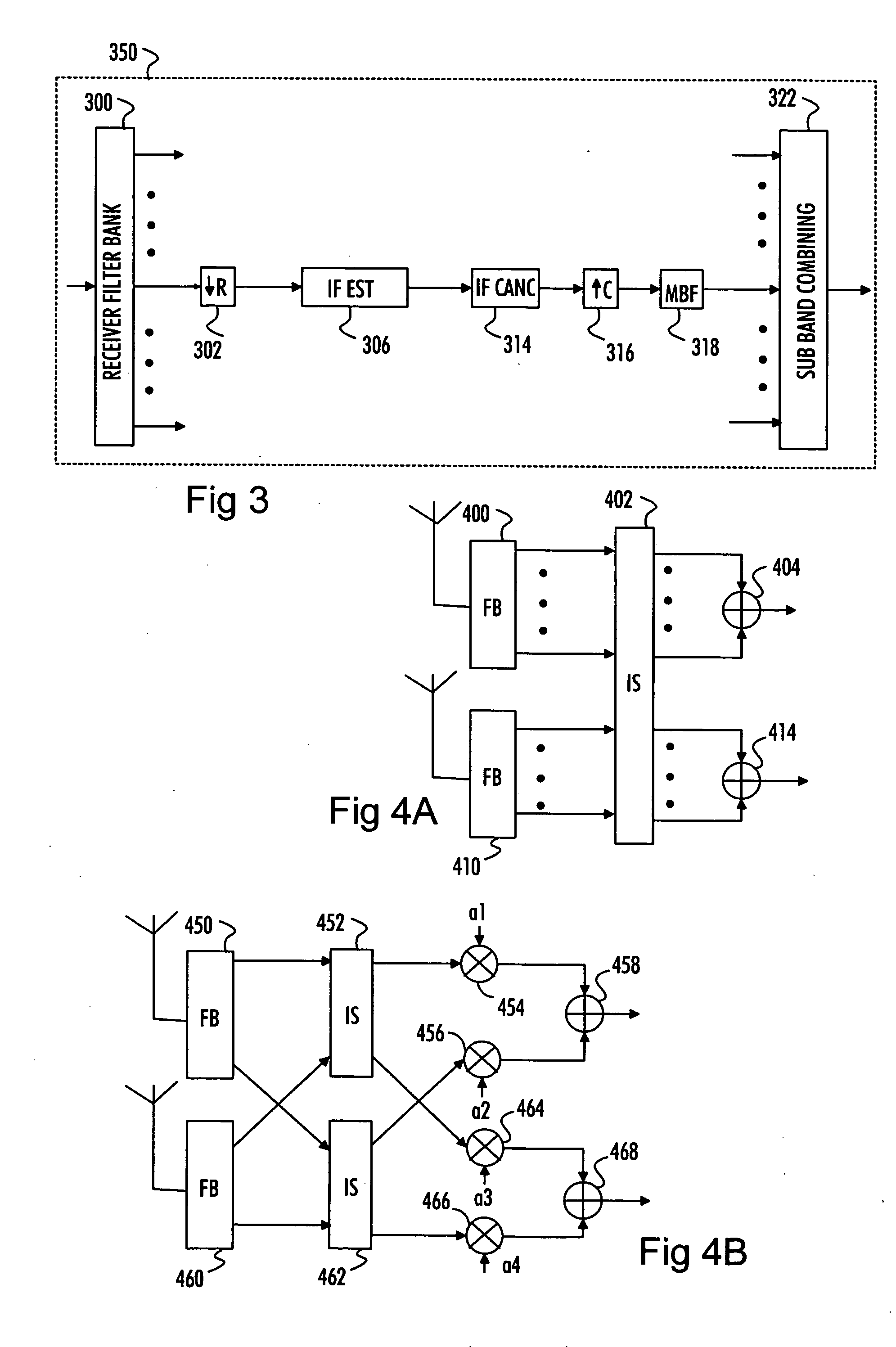Interference rejection in telecommunication system
a telecommunication system and interference rejection technology, applied in the field of signal processing in the telecommunication system, can solve the problems of severe inter-symbol interference (isi), computational complexity of the optimum maximum a posteriori probability (map) based sequence estimation for the joint detection of co-channel signals, and reducing the quality of data transmission
- Summary
- Abstract
- Description
- Claims
- Application Information
AI Technical Summary
Benefits of technology
Problems solved by technology
Method used
Image
Examples
Embodiment Construction
[0021] With reference to FIG. 2A, let us examine an example of a radio receiver 200 in which embodiments of the invention can be implemented. The radio receiver 200 may be a communication device capable of transmitting and receiving radio telecommunication signals or a communication device capable of only receiving such signals. The radio receiver 200 may belong to a telecommunication system and, thus, be a network element, such as a base station of the telecommunication system. The telecommunication system may be, for example, a spread spectrum communication system in which signals are transmitted according to a single carrier transmission technology. The telecommunication system may utilize, for example, code division multiple access (CDMA) and / or frequency division multiple access (FDMA) schemes.
[0022] The radio receiver 200 comprises a communication interface 206 to receive radio signals transmitted over a communication link 210 from a radio transmitter 208, which may be a subs...
PUM
 Login to View More
Login to View More Abstract
Description
Claims
Application Information
 Login to View More
Login to View More - R&D
- Intellectual Property
- Life Sciences
- Materials
- Tech Scout
- Unparalleled Data Quality
- Higher Quality Content
- 60% Fewer Hallucinations
Browse by: Latest US Patents, China's latest patents, Technical Efficacy Thesaurus, Application Domain, Technology Topic, Popular Technical Reports.
© 2025 PatSnap. All rights reserved.Legal|Privacy policy|Modern Slavery Act Transparency Statement|Sitemap|About US| Contact US: help@patsnap.com



